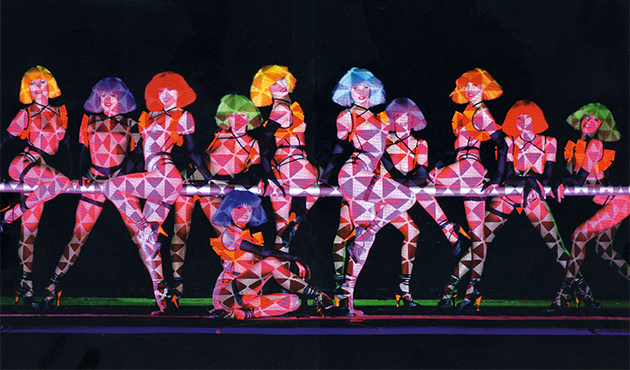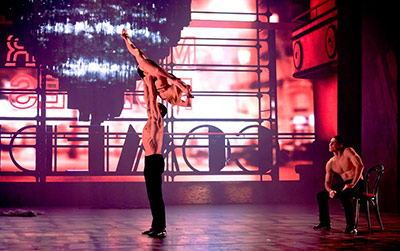
The Eiffel Tower had just been built for the Paris Exposition of 1889, new flashy monuments were emerging in the center and the Impressionist movement was at its height. At the turn of the 20th century, Paris was marking the start of the glamorous Belle Époque years. People had money to spend and were free of revolutions and wars for the first time in history — and with the boom came decadence and hedonism. Cue the brothels and cabarets of Pigalle.
In the late 1800s, Paris was alive with much of the action taking place in dark seedy corners of the Pigalle neighborhood in the 18th arrondissement. Formerly the red-light district of Paris, Pigalle today, is closer to being a toy town reminiscent of its debauched heyday rather than an organic center for Parisian culture, but its numerous cabarets such as the Moulin Rouge built in 1889, and the more recent Lido built in 1946, still succeed in drawing in the crowds from around the world; a crowd whose fascination with ‘l’art du nu’ (the art of the nude or ‘naked art’) remains intact.
Usually extremely kitsch, cabaret says more Las Vegas than Paris, even in France. Often burlesque, the shows of scantily-clad women in feathers and strategically placed sequins tend to be aimed at adults. Cabaret is very much about nostalgia of late 19th-century glitz and glamour. And although cabarets don’t have much to do with contemporary culture, they still form a building block for French humor, the perception of gender roles and society’s relationship to the female body.
The first cabaret of Paris was Le Chat Noir in 1881, which today is best known for being a boutique hotel. Cabarets are generally bars or restaurants with a stage where performances take place, from dancing to singing, theater to comedy. In the late 1800s, these rowdy establishments were more of a platform where artists could try out new acts. In the early 1990s, cabaret underwent a revival and gained a much-needed couple of notches with dancers such as American Dita Von Teese, who turned the form of entertainment into a reputable art. But cabaret isn’t necessarily akin to burlesque. Cabaret has given way to the café-théâtre, more popular with the locals than cabaret as we know it, which has less to do with eroticism and the female form, and more to do with art and music.
A handful of upmarket places such as Mugler Follies, Paris’ newest cabaret, demonstrate a more artful cabaret style. Erotic but creative, the shows here feature dancing, acrobatics, singing, theater, all engineered by the French fashion designer Manfred Thierry Mugler. Launched less than three months ago, Mugler Follies is a display of the designer’s highly entertaining sophisticated exuberance. Story-led, the show is centered on a young woman whose dream is to become a tightrope walker. Emotive and whimsical, Mugler takes the crude sexual and unpolished edge off and succeeds in reinventing the cabaret genre.
Extremely popular, extremely creative and extremely raunchy, Crazy Horse, is one of the city’s biggest entertainment successes. Very risqué, the shows here are more along the lines of dancing by performers such as Von Teese than anything trashy. An erotic celebration of femininity and beauty, the shows of skin and light — in a setting of red velvet, mirrors and lacquered wood — are stupefying and meticulously choreographed demonstrating great artistic skill.
While Le Boeuf sur le Toit is now known as a sophisticated French restaurant, the Art Deco space holds cabaret history dating back to 1921. Located close to the Champs-Élysées, the restaurant is wonderfully atmospheric with jazz performances of all styles. Throughout the eatery’s decades-long existence, it moved five times before settling in its current spot. The chicest cabaret with patrons such as Coco Chanel, Ernest Hemingway and Pablo Picasso, Le Boeuf sur le Toit hasn’t lost an inch of its rich and lively atmosphere.
Photos Courtesy of Crazy Horse and Mugler Follies


